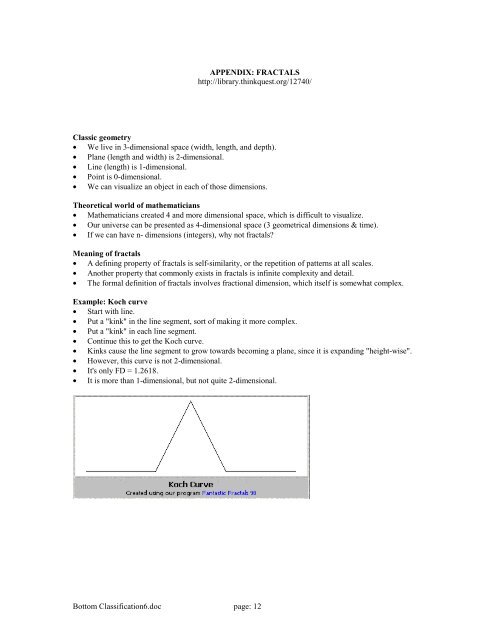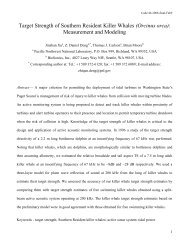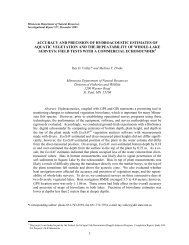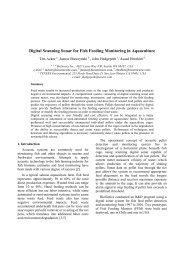Bottom Classification - BioSonics, Inc
Bottom Classification - BioSonics, Inc
Bottom Classification - BioSonics, Inc
Create successful ePaper yourself
Turn your PDF publications into a flip-book with our unique Google optimized e-Paper software.
APPENDIX: FRACTALS<br />
http://library.thinkquest.org/12740/<br />
Classic geometry<br />
• We live in 3-dimensional space (width, length, and depth).<br />
• Plane (length and width) is 2-dimensional.<br />
• Line (length) is 1-dimensional.<br />
• Point is 0-dimensional.<br />
• We can visualize an object in each of those dimensions.<br />
Theoretical world of mathematicians<br />
• Mathematicians created 4 and more dimensional space, which is difficult to visualize.<br />
• Our universe can be presented as 4-dimensional space (3 geometrical dimensions & time).<br />
• If we can have n- dimensions (integers), why not fractals?<br />
Meaning of fractals<br />
• A defining property of fractals is self-similarity, or the repetition of patterns at all scales.<br />
• Another property that commonly exists in fractals is infinite complexity and detail.<br />
• The formal definition of fractals involves fractional dimension, which itself is somewhat complex.<br />
Example: Koch curve<br />
• Start with line.<br />
• Put a "kink" in the line segment, sort of making it more complex.<br />
• Put a "kink" in each line segment.<br />
• Continue this to get the Koch curve.<br />
• Kinks cause the line segment to grow towards becoming a plane, since it is expanding "height-wise".<br />
• However, this curve is not 2-dimensional.<br />
• It's only FD = 1.2618.<br />
• It is more than 1-dimensional, but not quite 2-dimensional.<br />
<strong>Bottom</strong> <strong>Classification</strong>6.doc page: 12











